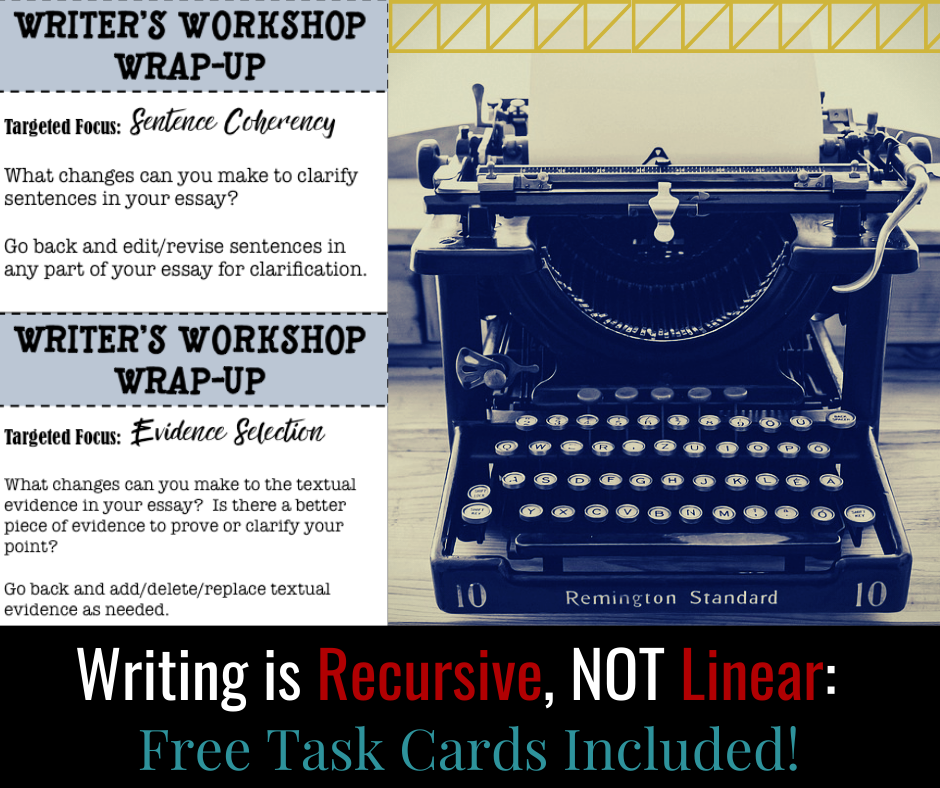Many graphic representations of the writing process show it to be a linear process. They go something like this:
1st- Brainstorm
2nd- Draft
3rd- Revise
4th- Edit
5th- Publish
The reality is that writing is NOT a linear process for everyone... or maybe anyone. Writing goes all ways: forwards, backwards, sideways, over there, and over here. In fact, the only piece of the writing process that occurs at a set point in time is publishing. The reality is that the writing process is recursive. Sometimes, we don't even begin with brainstorming; sometimes, we begin with drafting, or free writing. Sometimes, we don't revise before we edit; sometimes, we revise and edit at the same exact time.
When we teach the writing process in a linear sequence, students often become confused by the borders between the steps. Have you ever had a student ask you if it was permissible to go back and revise a thesis statement after having written a draft? The answer is OF COURSE! Not only is it okay to do that, but I encourage my students to do that. The more we write about an idea, the more focused we become in our arguments, and the thesis statement should be revised and changed accordingly.
So, if writing isn't necessarily a linear process, why do we teach it that way? In one word, practicality. It's easier to break any difficult task into smaller steps in order to learn how the steps work. Moving in a linear direction is definitely useful in many writing situations, but students need to be taught that even when we are following steps, writing is still fluid. It needs to move and to breathe; it needs to sit and to think.
Use the recursive graphic with your students to replace the old linear one and to show your students that writing is a recursive process.
But how do we communicate this to our students?
The practical way to go about doing this is to work all steps into the writing workshop structure. At the end of a workshop, give students 5-10 minutes to make any changes to any part of the draft as they see fit. This could mean adding a new sentence, deleting a paragraph, brainstorming a new argument, changing the thesis statement, or even throwing out the essay and starting OVER! It happens. When it comes to writing, anything and everything can be changed at any time.
Use the following "Writer's Workshop Wrap-up Task Cards" by Bespoke ELA to encourage students to view writing as recursive and to change anything as needed. These FREE task cards from Bespoke ELA will show students that they are "allowed" to change anything about their writing at anytime.
How do you teach writing as a process in your classes? Leave us a comment! We'd love to hear from you!
Meredith is the founder and creator of TeachWriting.org and Bespoke ELA. She has taught high school English for 10+ years in Dallas, Chicago, and New York City and holds a M.A. in Literature from Northwestern University. She has always had a connection to the written word-- through songwriting, screenplay writing, and essay writing-- and she enjoys the process of teaching students how to express their ideas. Meredith enjoys life with her husband, daughter, and sweet pups.







